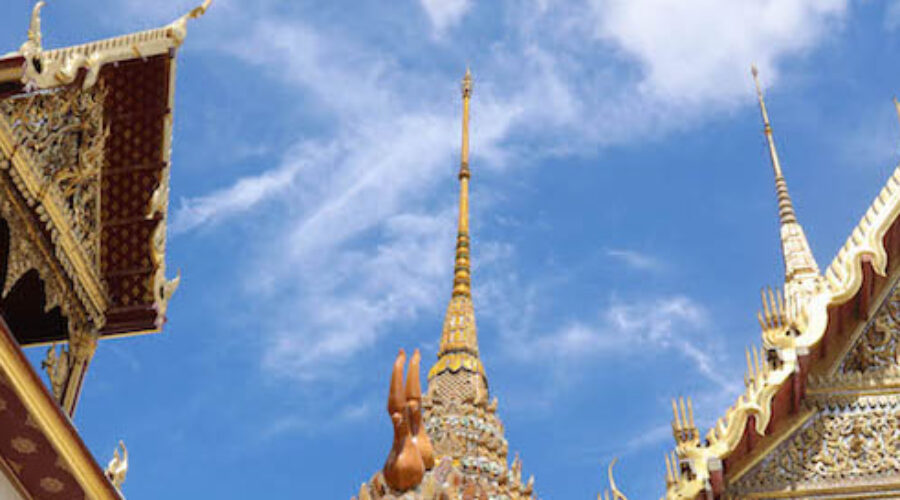THATraveller’s guide to Bangkok’s Temples
Travel blogger Holly O’Sullivan (THATraveller) shares her tips to help you navigate your way through the best of Bangkok’s temples.
The Grand Palace and Wat Phrakaew
Undoubtedly Bangkok’s most famous landmark, the Grand Palace continues to draw crowds with its history, beautiful architecture and intricate detail. It’s a complex of several impressive buildings, temples ‘wats’, gardens and courtyards – each with a certain asymmetry due to their organic development, with additions being made by successive reigning kings over hundreds of years. Although no one has lived here since 1925, it is still used for official events, and only two of the throne halls are open to the public.
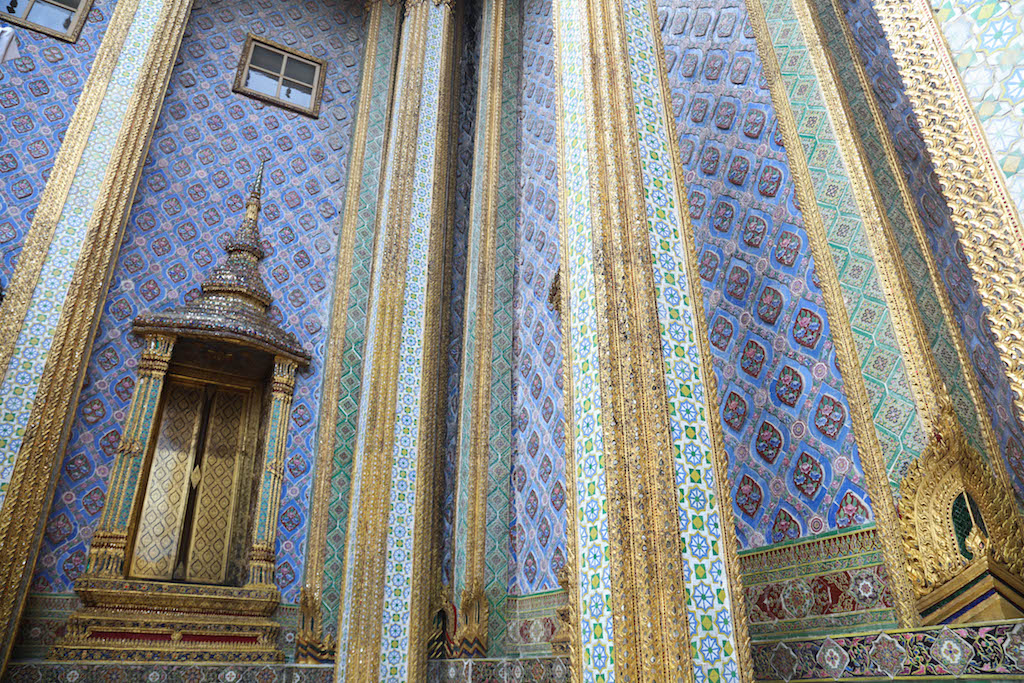
One of the most important buildings here is Wat Phrakaew, the Temple of the Emerald Buddha. Dating back to the 14th century, the Emerald Buddha was carved from a single block of jade, and even though small in size, it is the most important icon for Thai people. A seasonal cloak is changed three times a year to correspond to Summer, Winter and Rainy Season by HM the King of Thailand. This is done to bring good fortune to the country during each season, an important ritual in the Buddhist calendar. You are not allowed near the Emerald Buddha, or take photos inside the temple – you can however, see it from outside.
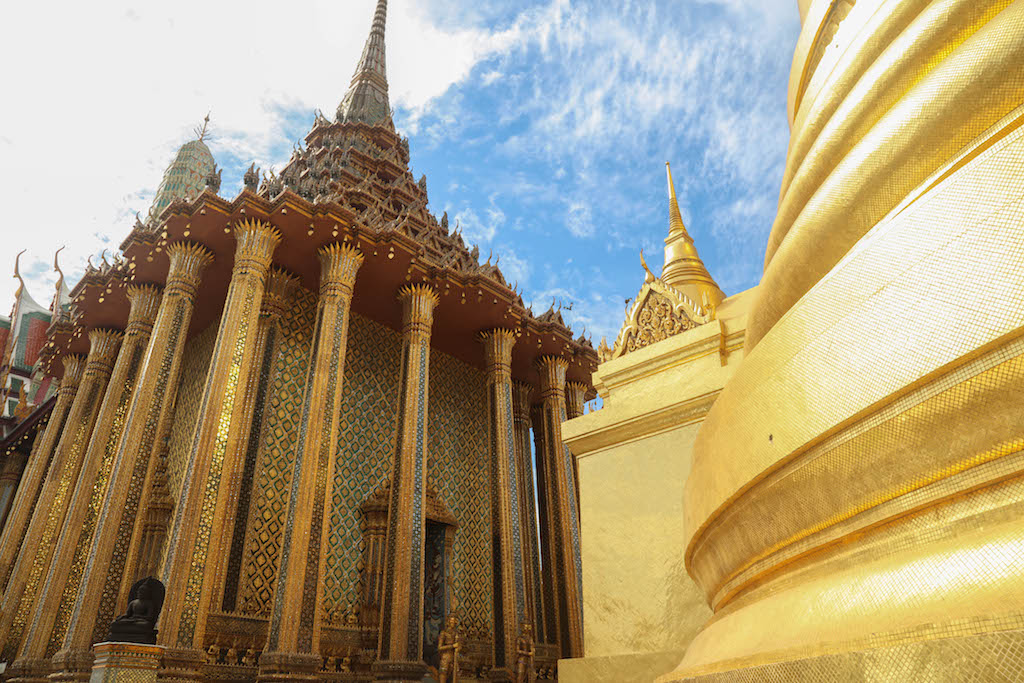
At the entrance you’ll find maps in various languages detailing information on each of the buildings within the palace. From 10am – 2pm, a guide is on duty and Personal Audio Guides (PAG) are also available in over five languages. Whether you take a tour or not, the route through the Palace is fairly fixed so it’s incredibly easy to get around.
- Note: Strict Dress Codes apply. See below for details.
- Opening hours: Daily, 8:30am – 3:30pm
- Price: 500 Baht
Wat Arun (The Temple of Dawn)
Located on the west bank of the Chao Phraya River, Wat Arun is renowned for its riverside location and physical differences to other temples found in Bangkok. Its spire is one of Bangkok’s world-famous landmarks and is most beautiful at sunset, and when lit up at night.
Its imposing spire is 70m high and decorated with tiny pieces of coloured glass and Chinese porcelain. You can climb the central prang, though the steps are fairly steep – beware the heat and humidity! From the top you will be rewarded with panoramic views of the winding Chao Phraya River, the Grand Palace and Wat Pho which sits on the opposite side of the river.
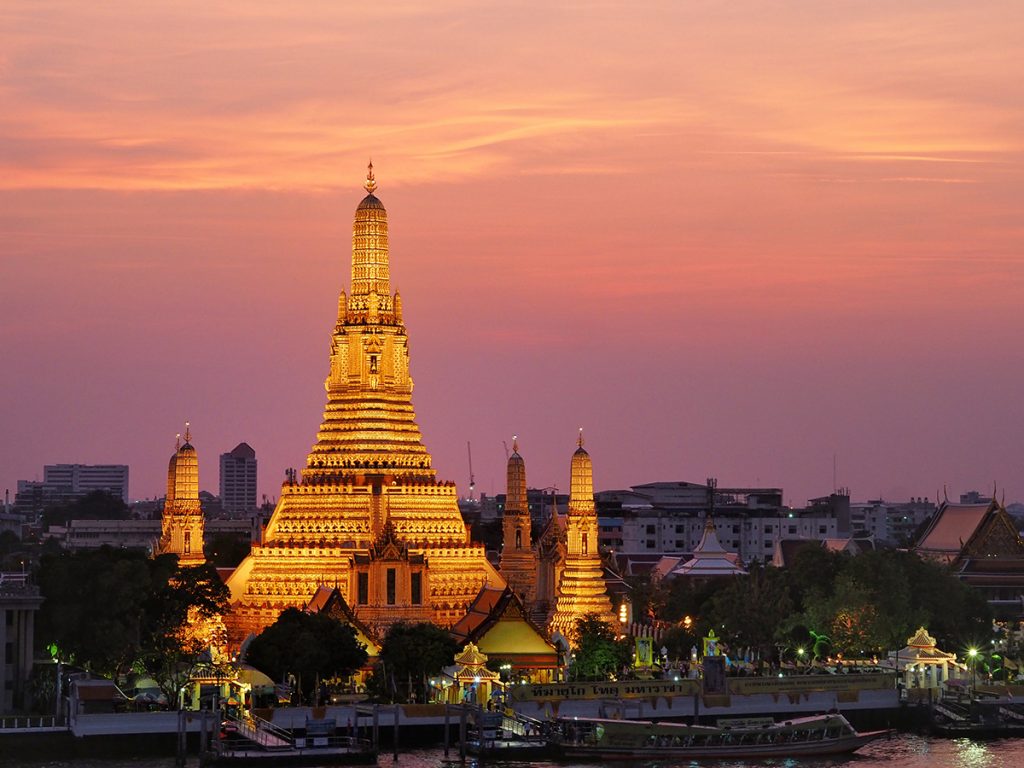
The legend… Wat Arun, named after Aruna the Indian God of Dawn, is an architectural representation of Mount Meru, the centre of the world in Buddhist cosmology. “In the mythology of Tibetan Buddhism, Mount Meru is a place that simultaneously represents the centre of the universe and the single-pointedness of mind sought by adepts. Thousands of miles in height, Meru is located somewhere beyond the physical plane of reality, in a realm of perfection and transcendence. The four-corner prang of Wat Arun, which houses images of the guardian gods of the four directions, reinforces the mystical symbolism.”
Directly opposite Wat Pho, from Sapphan Taksin boat pier you can take a river boat that stops at Pier 8. From here a small shuttle boat takes you from one side of the river to the other for only 3 Baht.
- Note: Strict Dress Codes apply. See below for details.
- Opening hours: Daily, 8:30pm – 5:30pm
- Price: 50 Baht
Wat Pho – Temple of the Reclining Buddha
The Temple of the Reclining Buddha is one of the largest temple complexes in Bangkok. The Buddha measures 46m long and is completely covered in gold leaf.
It is an easy 10-minute walk from the Grand Palace, and English-speaking guides are happy to tell you the temple’s stories for around 200-400 Baht. Wat Pho is often considered the leading school of massage in Thailand, so where better to get a traditional Thai massage? Or even just a foot, or shoulder and neck massage to relax after a day of walking.
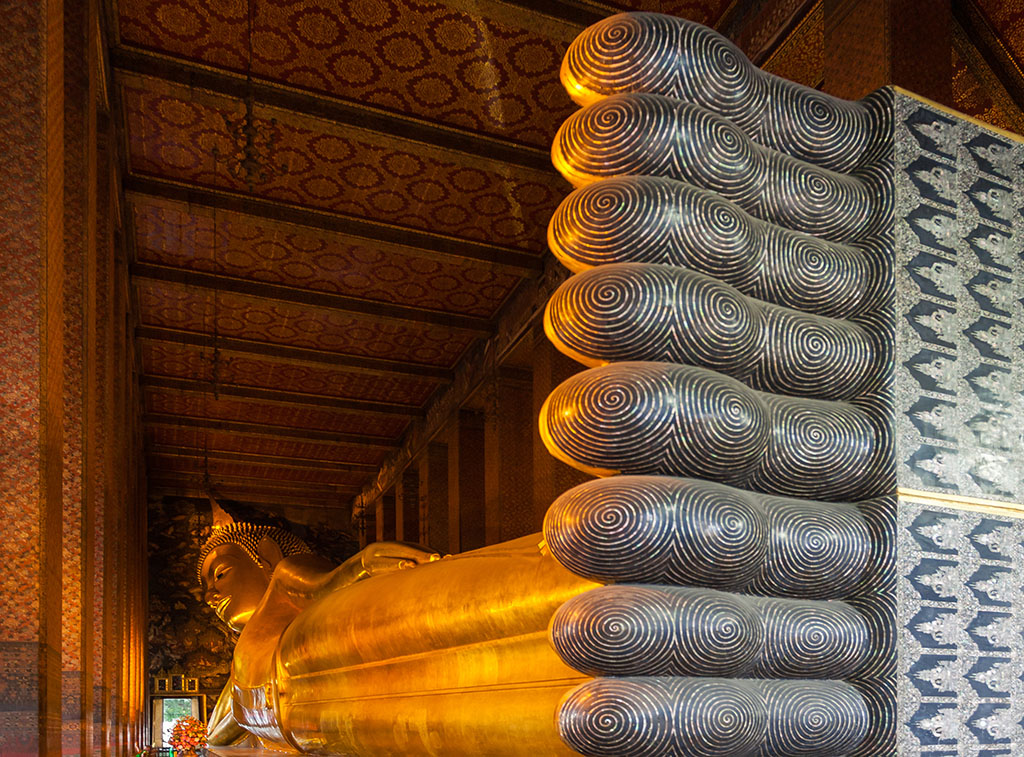
For a little bit of good luck, you can purchase a bowl of coins at the entrance of the hall which you can drop in the 108 bronze bowls which line the length of the walls. The money goes towards helping the monks renovate and preserve Wat Pho.
- Note: Strict Dress Codes apply. See below for details.
- Opening hours: 8am – 5pm
- Price: 100 Baht
Wat Traimit – Temple of the Golden Buddha
Housing the world’s largest gold seated Buddha, measuring nearly 5m in height, Wat Traimit is located at the end of Chinatown’s Yaowarat Road.
Some History: In the past, artisans crafted the Buddha’s in gold, and to disguise them from invading armies, covered them in stucco and plaster. The Buddha at Wat Traimit was discovered by accident when it was accidentally dropped revealing under its casing of plaster, a beautiful solid golf Sukhothai style Buddha. Pieces of the plaster are still kept on display within the museum – 10 Baht.
- Opening hours: 9am – 5pm
- Price: Free.
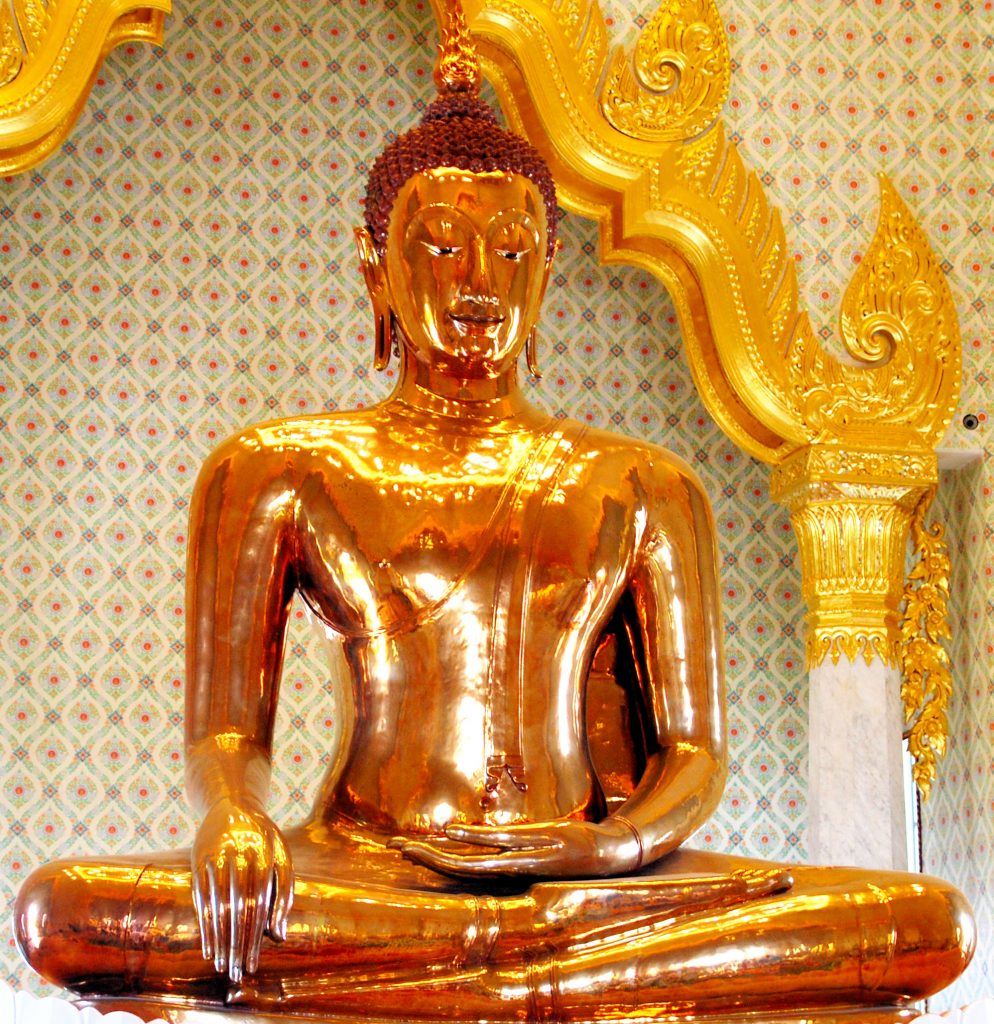
Dress Code for Temples
Although temples (or ‘wats’) are popular for tourists, they are also an important place of worship so it is important to dress appropriately – these sites are incredibly sacred.
- Men must wear long pants and shirts with sleeves (no tank tops).
- Women must dress modestly – no see-through clothing, and no bare midriffs, legs or bare shoulders.
- If you are wearing sandals or flip-flops you must wear socks (so pretty much no bare feet). When entering a temple, be sure to remove your hat.
If you show up at the gate improperly dressed, you will either be turned away or referred to somewhere nearby where you can either purchase or rent a sarong to cover up.
Read more of THATraveller’s travel guides here, and more fabulous photos on Instagram: @holly_osullivan

